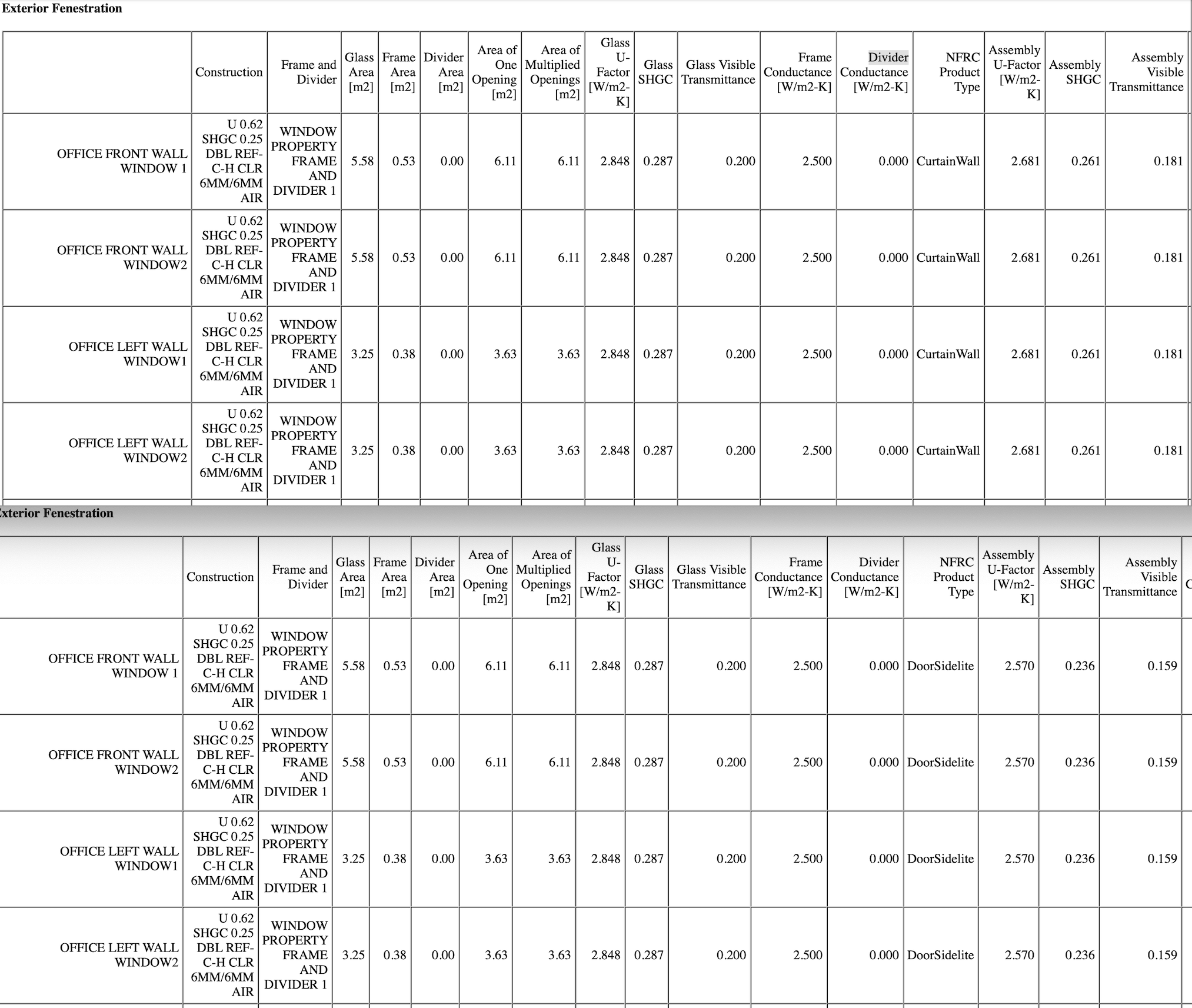First time here? Check out the Help page!
 | 1 | initial version |
Hi @Keigo. I'm just sharing a few test results. @JasonGlazer's feedback should be upgraded as the accepted answer.
I added a Frame&Divider object to the 4 windows in the office zone of the US DOE Prototype Warehouse. I compared E+ v23.1 vs v23.2. Same results. I then changed the "CurtainWall" NFRC product type (2.00m x 2.00m NFRC size) to "DoorSidelite" (0.60 m x 2.09m) :

As @JasonGlazer stated, the Assembly U-factor, SHGC and VT remain the same for all 4 windows (regardless of their actual sizes), but they do differ if one changes the NFRC product type.
@Keigo, you wrote: "The outermost size of the standard window is fixed, so the window area decreases as the frame width increases."
This is not the case. When linked to a Frame&Divider object, a fenestrated sub surface's vertices no longer represent the whole product (or rough opening) - its vertices represent the glazing area only. This is well stated in the IO Reference (and discussed here):
The window vertices that you specify in the FenestrationSurface:Detailed object are those of the glazed part of the window, not the frame. EnergyPlus automatically subtracts the area of the frame—determined from the glazing dimensions and the frame width—from the area of the wall containing the window.
Hope this helps.
 | 2 | No.2 Revision |
Hi @Keigo. I'm just sharing a few test results. @JasonGlazer's feedback should be upgraded as the accepted answer.
I added a Frame&Divider object to the 4 windows in the office zone of the US DOE Prototype Warehouse. I compared E+ v23.1 vs v23.2. Same results. I then changed the "CurtainWall" NFRC product type (2.00m x 2.00m NFRC size) to "DoorSidelite" (0.60 m x 2.09m) :

As @JasonGlazer stated, the Assembly U-factor, SHGC and VT remain the same for all 4 windows (regardless of their actual sizes), but they do differ if one changes the NFRC product type.
@Keigo, you wrote: "The outermost size of the standard window is fixed, so the window area decreases as the frame width increases."
This is not the case. When linked to a Frame&Divider object, a fenestrated sub surface's vertices no longer represent the whole product (or rough opening) - its vertices represent the glazing area only. This is well stated in the IO Reference (and discussed here):
The window vertices that you specify in the FenestrationSurface:Detailed object are those of the glazed part of the window, not the frame. EnergyPlus automatically subtracts the area of the frame—determined from the glazing dimensions and the frame width—from the area of the wall containing the window.
Hope this helps.
 | 3 | No.3 Revision |
Hi @Keigo. I'm just sharing a few test results. @JasonGlazer's feedback should be upgraded as the accepted answer.
I added a Frame&Divider object to the 4 windows in the office zone of the US DOE Prototype Warehouse. I compared E+ v23.1 vs v23.2. Same results. I then changed the "CurtainWall" NFRC product type (2.00m x 2.00m NFRC size) to "DoorSidelite" (0.60 m x 2.09m) :

As @JasonGlazer stated, the Assembly U-factor, SHGC and VT remain the same for all 4 windows (regardless of their actual sizes), but they do differ if one changes the NFRC product type.
